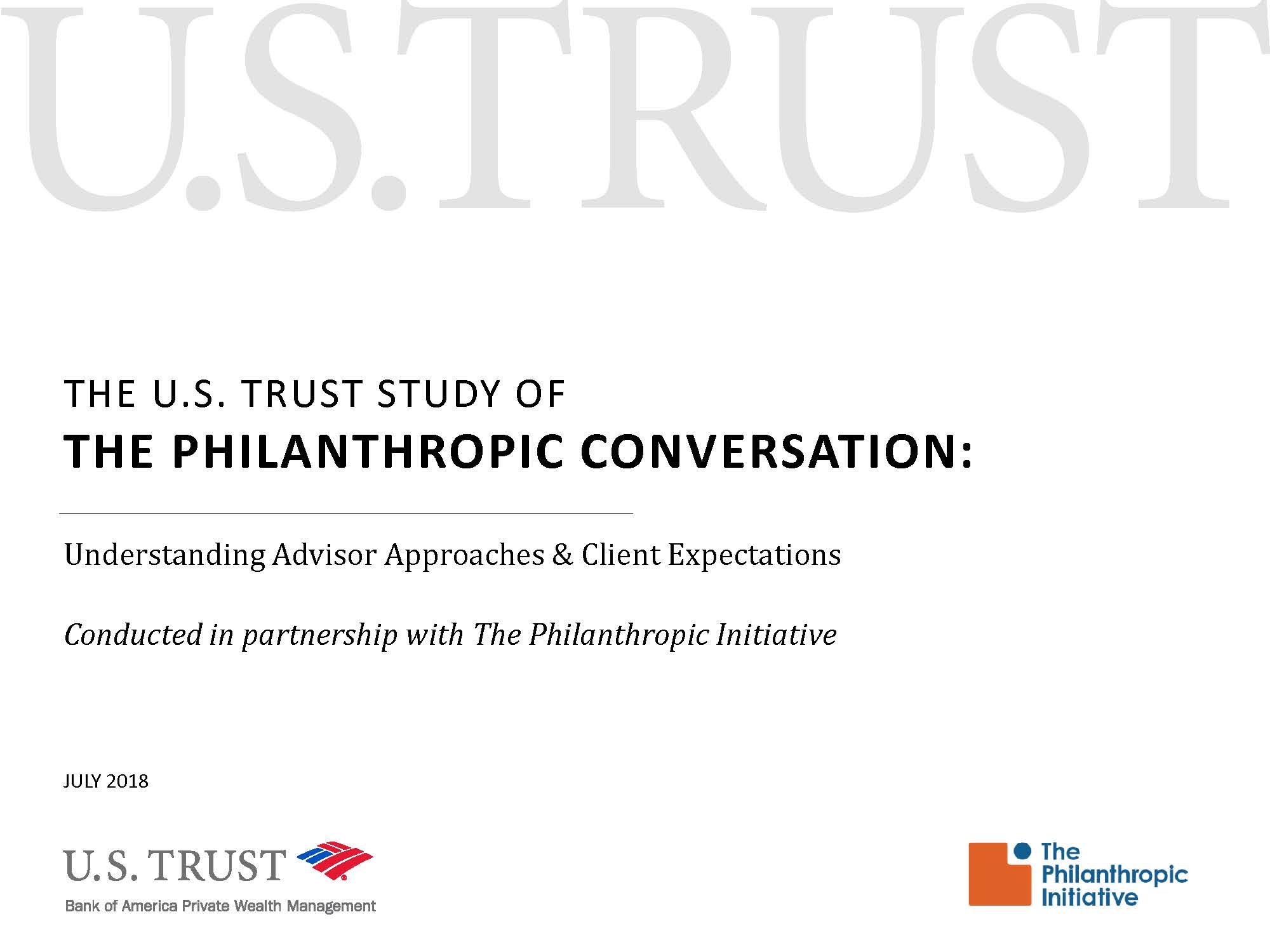
If you’ve read TPI’s research with U.S. Trust on how advisors and their high-net-worth (HNW) clients view the philanthropic conversation, you know that the research helps advisors understand what, how, and when clients want to approach the conversation, as well as what their current experience is. Some of the most interesting findings are where there are gaps between the client and advisor experience, and how, over time, these gaps and expectations have evolved.
We at TPI generally see that interest in philanthropy is rising among HNW individuals and families, and that has been matched by increased interest and commitment on the part of professional advisors in engaging their clients in discussions of philanthropy.
One of the most interesting parts of sharing the results of this research has been hearing from professional advisors directly about how they approach these conversations. Advisors have shared with us their creative ideas for how to talk with their clients about philanthropy, and we’ve been able to combine them with our own tried and true strategies to come up with the following list.
8 ways advisors can be successful in talking with their HNW clients about philanthropy:
- Make philanthropy part of your initial information gathering discussion with new clients.
Advisors who successfully integrate charitable giving in their client conversations don’t necessarily stop and say, “Okay, now we’re going to talk about philanthropy.” Rather, they incorporate the topic into an overall discussion of a client’s needs. Some advisors suggest putting it on the agenda for the very first meeting with a client. Others include it on the initial data collection form they ask clients to fill out, so it is one item on a list of topics assumed to be covered with any new client. - Talk about legacy.
Particularly for trust and estate attorneys who are likely to be having conversations about an individual’s long-term plans, there is a real opportunity to learn more about a client’s vision of the world they would like to leave behind. By opening up a conversation on legacy, an advisor can learn more about the client’s overall perspective on the world, including whether there might be interest in giving. - Ask open-ended questions.
When clients have previously been active philanthropically, advisors can learn more about it by opening up the conversation with comments like “tell me more about that” or “what happened in that case?” Giving clients space to reflect on past giving in a way that doesn’t introduce pressure is useful to them and can also help you as their advisor understand underlying motivations and passions. - Let the client step back from the finances.
In line with discussing a client’s legacy, one advisor we spoke with suggests opening the conversation by inviting a client to “wave a magic wand,” and talk about which issues in society they could address if they were able to do so. Many times, advisors learn that clients are already active in their communities through philanthropy or volunteering. This can open up a conversation about how their vision of a better world fits into their wealth plans and help to identify some areas in which a client may want to do more. - Offer top-notch data.
Advisors emphasize the importance of tailoring the conversation as you get to know the client. For some clients, talking about passion and the vision they want to see in the world is paramount. Others, though may get excited by numbers and measuring impact. Advisors we’ve spoken with suggest that providing customized reporting and quality information about a client’s charitable giving can help them think about the impact they are having and lead to increased giving that is more effective and more satisfying. - Look at past tax returns to understand previous charitable giving.
Tax advisors in particular are already reviewing previous tax returns. Some advisors suggest looking at the relevant schedules and framing questions about philanthropy as “do you plan to continue this level and type of giving?” Rather than framing philanthropy as a new, intimidating task, this approach allows clients to see their giving as an evolution that simply builds on what they have previously done. - Incorporate philanthropy into regular tax discussions.
For example, some tax advisors use quarterly tax estimates as an opportunity to reflect on all the buckets available, highlighting when it may be an opportune time to make a donation or open a donor-advised fund (DAF). - Set up a formula.
To assuage any concerns about not having enough money for the next generation, some advisors suggest setting up a formula to help clients see their true financial picture – something along the lines of “if we can guarantee that your children will receive X amount, would you be interested in some of the rest going to charity?” More often than not, the answer is yes.
What are your strategies for helping clients think about philanthropy? Please share them with us!
+++++
TPI is committed to actively promoting and advancing strategic philanthropy by conducting cutting-edge research, publishing donor education resources, and training individuals, organizations, and advisors in best practices. TPI helps professional advisors build their capacity to meet the philanthropic needs of their clients by strengthening the internal culture of philanthropy within firms, and providing tools and resources to enable relationship managers and advisors to better support their clients and attract new clients. To learn more about TPI’s services and work with professional advisors, contact Lisa Spalding [PL1] at lspalding@tpi.org or 617.338.5889, or Rebecca Miller at rmiller@tpi.org or 617.338.5882.

